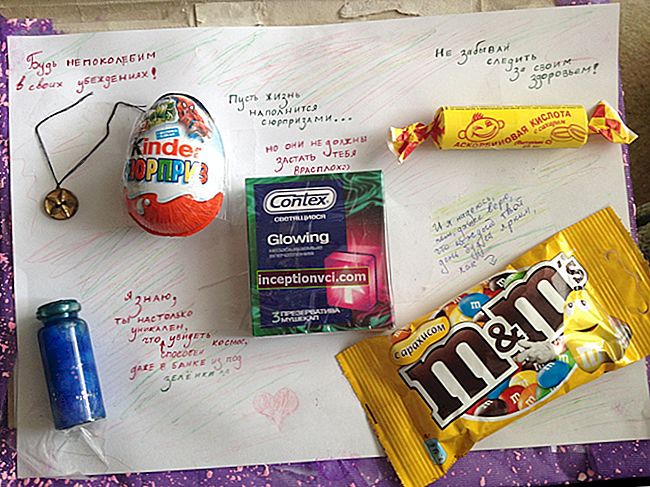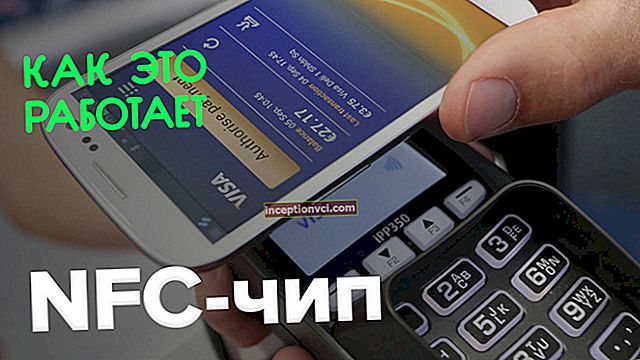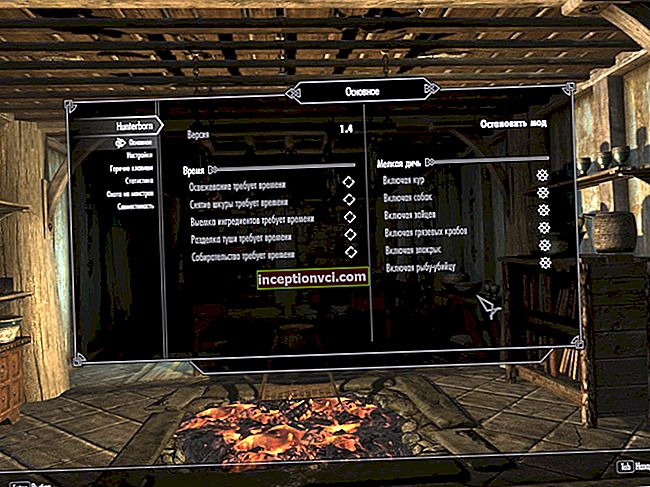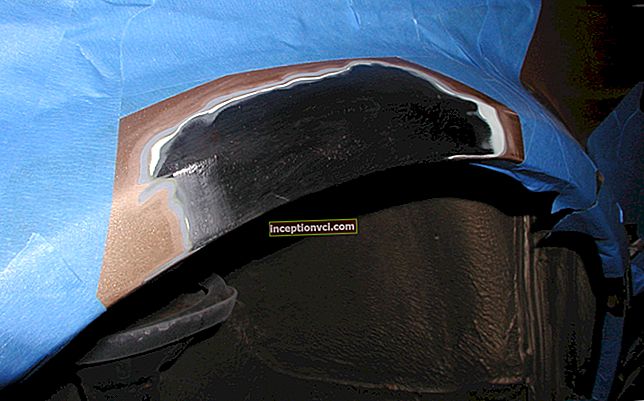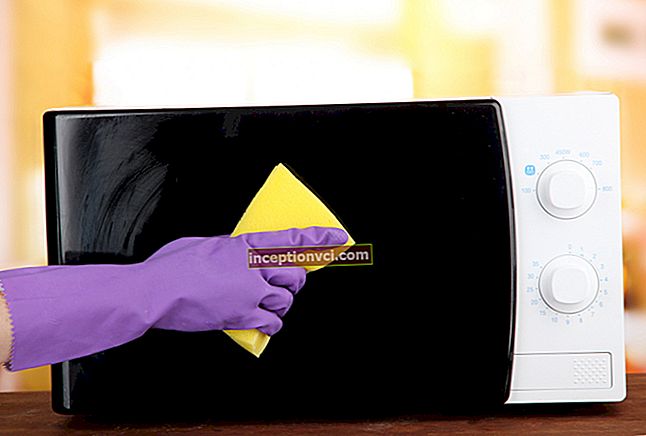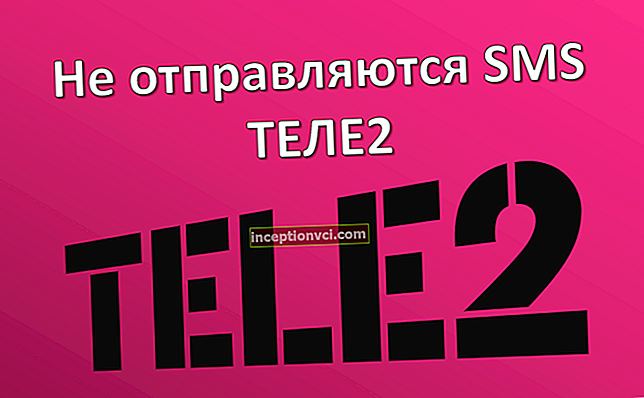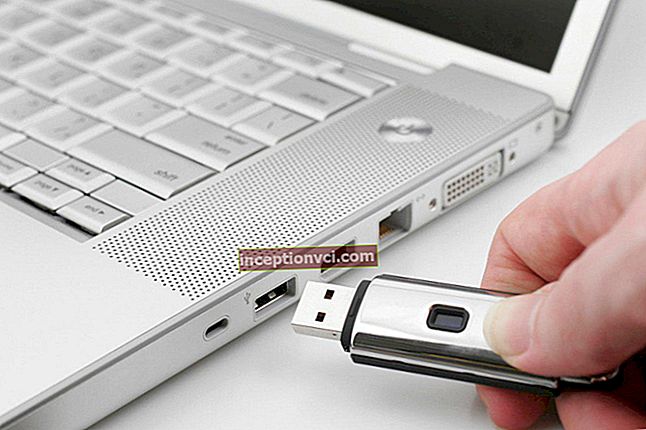Equipment:
• Nokia N900
• Charger
• Adapter for charger
• Nokia Battery BL-5J
• Nokia Stereo Headset WH-205
• Video cable
• Cloth for cleaning the display
Introduction
For a long time, Nokia N900 remained in the shadows. No, not because of any punctures or flaws. The thing is that the previous models E75 and 9300i have become very familiar among the fans of such devices, so it took time for Nokia N900 to be taken seriously.

There are, however, strange omissions and shortcomings in the device. Strange as it may sound, Nokia N900 cannot handle USSSD requests. For example, a request like * 102 # ends with the answer "Invalid number". Naturally, this function is not overwhelming, but nevertheless it is an unnecessary inconvenience. By the way, the user will not see the IMEI code after dialing * # 06 # either.


The next drawback is the lack of MMS support. A similar situation with the iPhone immediately comes to mind. It would seem that this function is not too important (how often do you use it?), But nevertheless, for such a price, one would like to have MMS, because the most "underdeveloped" phones have this function. There is an alternative in the form of E-mail, but will everyone want to use it?
Go ahead. The implementation of call services is inconvenient in some places. There are no complaints directly about the registration, but, for example, the duration of the call is not recorded anywhere. Or else - there are no recordings of WLAN and GPRS sessions, while most desktop widgets gravitate towards the Internet.

Search in "Contacts" is carried out in portrait mode from the "Phone" application or by means of a slide-out keyboard. The Nokia N900 also lacks the usual contacts for most groups. Looking at the SMS service, I again recall the story of the Apple iPhone (the absence of a normal display of the “Delivered” status). The font seems small and cannot be enlarged.
The battery life of the device is also not encouraging, so it is better to always carry a second battery with you. A high capacity battery is available for Nokia N900. It is attached together with the back cover, which increases the thickness of the device. In addition, a capacious battery is not included in the package; it will need to be purchased separately. If anyone needs it, it's called Murgen Power Nokia N900. The capacity of this battery is 2400 mAh.

The recently released firmware fixed some obvious bloopers, but in general, the above shortcomings remained. Recently, the problematic aspects of the device began to be removed, oddly enough - by third-party developers.
Nokia N900 is a very complicated device, even by modern standards. Next, let's talk about the main functions of the device, and dwell on some details in more detail.
Nokia N900: device, mechanics
Nokia N900 is a horizontal slider. Case materials look expensive (unlike the same 5800). The design of the device is moderately strict. Subjectively, I will say - it is better than in 5800 or N97 / Mini. Again, this is my subjective opinion, and you have every right to disagree with me. It seems that in this aspect, Nokia developers managed to create an attractive solution.
Auto-finishing in the slider is not as strong as, for example, in Nokia E75. Overall, the fixation is good. You can easily open and close the slider with one hand. No backlashes were noticed.





One of the main advantages of Nokia N900 is the screen. The display size is 3.5 inches, and the resolution is 800x480 pixels. The touch response is good, but falls short of the iPhone. The display is made using resistive technology, which allows navigation on the phone using pointed solid objects. The brightness is also high. In the sun, readability will drop by about 60 percent, which can be called a good result. The coating is scratch-resistant (with normal handling).

The front part of Nokia N900 is made in a peculiar way, so the rectangular film for the screen does not look very good. According to unverified information, special kits of protective film are on sale for the N900 display. By the way, there is a small gap between the display bezel and the screen itself, so if you want, you can shove the edges of the film there (dust under the bezel also clogs up quite well).
The N900 weighs about 200 grams. The stand on the back side is unnecessarily shifted to the left, which makes the device on the verge of stability. Moreover, when the keyboard is extended, pressing on the top of the right side of the display causes the device to wiggle. We already wrote about charging above - again a new connector, so you have to constantly carry an adapter with you. In truth, the Finnish manufacturer changes the connector types too often, which negatively affects the nerves of the users.

The speakers located on the sides have a medium volume. They are much louder in Nokia 5800. In principle, the volume is enough for a call, especially in combination with vibration, but in winter, due to the tightness of clothing, the volume of the speaker will seem insufficient.
The memory card is located under the battery cover. The lid itself is held very tightly (with eight latches). There are absolutely no backlashes and creaks in this part of the phone. True, if you constantly open it, for example, to replace the battery, then after a while it may start to mope.
The lack of a "menu" button, which is implemented in the N800, N810, N97 and even the 5800, is not encouraging. Those who are used to this key will definitely be disappointed. The phone uses a slider on the side of the device to turn off the screen and lock the keys. The additional function of removing the block looks interesting. It turns on when you press the Power button, after which an iPhone-style slider appears on the screen. But it doesn't work as well as in the iPhone - the difference in the types of screens affects. Be that as it may, we will not discuss the benefits of such an innovation for a long time.
Nokia N900: keyboard
At one time, the Finnish manufacturer showed us devices that have a good keyboard, both in terms of capabilities and mechanics. This was a range of Series80 based devices. The only miscalculation in them is the lack of backlighting.

There are many devices on the S60 with a full keyboard, but even the flagship Nokia E90 was inferior to the models of that generation in this regard.
In Nokia N900, the keyboard is not a standout feature. In terms of mechanical properties, the key travel is clear here, as well as the pressure response. There is a backlight, there are no backlashes. The size of the keys is average for this kind of devices.
Nokia N900: interface
The main screen of the N900 consists of four desktops, which can be changed by swiping left or right. You can send all kinds of shortcuts to applications and games, widgets, contacts or browser links to them. It's a shame that all of these things don't have grid alignment. This problem can be solved by installing the additional Tweaker application. Another thing I don't like is that there are no convenient tools for managing content and viewing desktops. And yet - if you do the following: turn off the table, and then turn it on again, then all its contents disappear somewhere (in the sense of disappearing).


The box contains the following widgets: media player, Foreca weather, calendar, RSS feeds, location, OVI store, and Google. There is no default message widget (you have to install it yourself). As for adding contacts, there were some surprises here too: only a picture and a first name (without a last name) are displayed. After clicking on a contact, the business card menu opens. I'm not happy that it is impossible to launch the contact editor from here, and what is completely annoying - the signature is not renamed. There is also such a detail: if the "alias" field is filled in a contact, then it will be displayed on the desktop as well. This implementation will seem inconvenient to many.
The Nokia N900 has several pre-installed themes and a selection of default wallpapers for the desktop. Themes do not affect all interface elements. In this aspect, the phone looks damp. In the same smartphones based on the S60, everything is much more diverse. In any case, the N900 also has a lot to expand (for example, an editor that allows you to correct almost all elements manually). It should be noted that N900 themes have * .deb extension.


Next, we offer you several themes for the example of a calendar. They show good work with colors and a clear drawing of interface details. On the resource maemoitalia.com, the whole interface is being redrawn, the creation of new high-quality themes, icons, etc. In short, things are going well on this issue. The choice of color solutions is constantly growing. It should be said that from the light colors used at the very beginning of the release of the model, the theme developers gradually switched to darker tones (and this, in our opinion, is a positive moment).




It is impossible not to note the access key in the menu. This key is on-screen, and works according to the following principle: press - we get to the menu, but only on condition that there are no running applications; otherwise, these applications will be displayed first, and only after clicking again we get to the menu. It turns out that you never know how many times you have to press in order to get to the menu. Why couldn’t it be done, as in the same S60: short press - the menu, pressing the button - the list of running applications? The question is rhetorical.
The third-party Shortcut application partially eliminates the inconvenience, with which you can assign a call to the list of running programs or enter a menu to different function keys (proximity sensor, camera button).
The menu is designed as a 5x3 grid of icons. The bottom right icon opens a submenu, which contains all the installed elements. In short, with a large number of installed applications, such a structure cannot be used. You cannot create folders, swap icons. Again, third-party developments come to the rescue (MyMenu, Catorize, etc.). The screenshots below show the menu edited by the Catorize application.


Another "highlight" of the interface is the lack of a "Back" button. The interface developers decided to introduce some non-standard here, which only makes it worse. In order to go back, the user has to click on any empty spot on the screen, which sometimes leads to random launches of unnecessary applications.
All settings are concentrated in the "Options" menu. Here you can adjust items such as display, languages, text input, Bluetooth, connectivity and much more. I was pleased with a good set of notification indicator settings (a small light on the left at the bottom of the device). To enter text, it is also possible to use 2 dictionaries at once, as well as to select any installed dictionaries from the list.



A little about keyboards. The virtual keyboard is quite convenient, but there is an old localization problem for our population. As a result, we get several punctuation marks on one key. However, you probably won't use this keyboard often.


As for the retractable keyboard, it copes with all the tasks with a bang. Confused only by the lack of a navigation button, since for our localization 4 arrows "down", "up", "right", "left" hang on only two keys.
And, finally, in conclusion of this subparagraph of the review, I would like to say that I was very pleased with the function of automatic connection to the WLAN network. Of the troubles, we highlight the lack of support for data transfer (except for photos and videos) via Bluetooth. This problem is solved, like many others, using third-party applications.
Nokia N900: interface in detail
Opinions are heard everywhere that the Nokia N900 mobile device is an Internet tablet with a call function. This opinion appeared due to the poor implementation of telephone services in the N900.Yes, they are quite original, but at the same time in many places one feels that they are not fully thought out.
The services in the device are represented by the following applications: "Phone", "Contacts book" and "Messages". We have already talked about the absence of such things as "MMS", "Journal", support for USSD requests, setting a melody for a selected contact, support for STK and traditional groups in the "Contact book" item. Now let's talk about everything in order.
"Journal", in principle, there is some. It stores up to 60 last UIDs (for each contact, only the last event is shown). The duration of calls is not recorded. In general, everything is done quite nicely. For example, by clicking, information about the selected subscriber's number is displayed, after clicking on the image, a list of all his call data is displayed.


The "Contact Book" has interesting and original functions: sorting contacts by recent events or, for example, displaying the latest events of a selected contact. They are also lists of 60 items. By the way, they display not only numbers, but also chat messages and SMS messages.
Of course, these opportunities are encouraging, but there is still no complete "Journal". And again, a third-party developer comes to our aid, in our case, Glogarchive. True, there will be no data about the Wi-Fi / GPRS session or the duration of calls.
We talked about searching in the "Contact Book" above, but now I would like to mention one more drawback: when searching from the desktop, the first ten characters are written in Latin (for any keyboard layout). Sometimes, it is very annoying.
The problem of missing profiles can also be solved with the help of additional software (for example, Tweaker). By the way, even the lack of support for USSD requests can be fixed thanks to a special widget (which made it possible to forget that the phone was initially unable to do this). Quite recently, the same third-party developers have created an application with the help of which the MMS function in the phone became operational. The application is called fMMS. Incorrect redirection work has also been fixed. Progress, as they say, is evident. But with the "Book of contacts" and melodies for a specific subscriber, so far no shifts are heard.


For a long time, the function of blocking unwanted calls was haunted, but now a python script appeared that allows you to do this. Of course, not very convenient, but still.
Another interesting detail about the "Contact Book": the services Jabber and Gtalk are preinstalled here. You can add Skype, ICQ, etc. here. In general, despite the rather weak implementation of contacts, it is quite convenient to use this function with sufficient accuracy.
There is a dedicated manager for ICQ called Pidgin. For users accustomed to regular QIP and ICQ, at first Pidgin will seem like a scary program. The negative impression will be aggravated by the fact that this utility was ported without modification, so it was not designed for the N900 interface at all. Over time, I think, the user will get used to it.
The "Messages" service is, in principle, implemented quite well. Of the shortcomings, one can single out only the inconvenience when flipping through long lists.
Nokia N900: a functional set
GPS navigation. The N900 comes with OVI Maps preinstalled. There is a lot here. The only thing missing is voice navigation, but considering that the interface is inconvenient for a car, this omission can be called insignificant. Traffic jams are not shown, the rendering of interchanges is weak. In general, as a pedestrian navigator, this device is an irreplaceable thing, but not for the road.
The GPS module itself is slightly inferior to its counterpart in the E75. The accuracy is lower here, and if you turn off the A-GPS function, then that will not be.


The office is represented by the Documents ToGo package. It is paid, so after 30 days of trial use, it will ask for money for activation. With the text view, this application is all right. The Nokia N900 has a built-in AbiWord editor, but it does not have such a function as editing spreadsheets.As for editing, it seemed to me not very convenient (however, as in most devices of this type). Most likely, you will have to look for a more convenient text editor (fortunately, there are a lot of them on the net). There is talk that a full-fledged editor, sharpened for the N900, will soon appear, but when exactly is still unknown.
There is such an application in the phone as "Notes", which, in fact, is a regular notepad. There is also a PDF viewer. In addition, the "Application Manager" is full of different programs for creating and editing notes.
The calendar in the N900 is a useful thing. It supports several event bases that the user can turn on and off, create on their own, and see the workload. Moreover, they all differ from each other in color. The birthday alarm sounds the day before the event.
Let's go to the file manager. It is quite simple here and is only suitable for walking through folders. I advise you to find and install a more functional external manager. However, as we have already noted before, third-party programs often do not correspond well to the N900 interface.
The "Photos" application is standard in its functionality. Sorting of images into folders is available, but every time you enter "Photo", it is reset. There is no way to change this. Viewing images is very convenient and fast, it is much better than in Nokia 5800. Image rotation and scrolling can be compared to iPhone.


The video has been removed from the "Gallery" item. The videos are now viewed from the "Media Player". If we talk about the "Media Player", then it has a number of glitches and imperfections. This is especially true for reading tags and working with the media library. There is no built-in equalizer. There is one development that adds it, but it loads the processor terribly (by 60-70%), so only masochists will use it.
The supplied headset is traditionally not a quality standard. You cannot use it to control the player, moreover, there are no control elements on the N900 body either. In this situation, the best option would be to buy Bluetooth stereo headphones.
Internet radio is integrated into the Media Player. The base is mediocre, but it's quite possible to use it. An unfortunate omission is the lack of search. By the way, there is no program for the radio receiver by default, but there is a built-in receiver. The way out of the situation is to download and install the application.
The FM transmitter function is very useful. For example, in a car where there is a radio tape recorder without support for the Bluetooth A2DP profile, this function will help out more than once.
I also recommend installing the FM-Boost app, which makes the transmitter work at full power. By the way, if you put the music on pause, then after a while the transmitter will automatically turn off.
Nokia N900: camera
The device is equipped with a pretty good 5-megapixel camera with autofocus by today's standards. Autofocus performance is average. Macro mode was not impressive (the first shot is almost always lumpy). I was pleased with the presence of a protective curtain. There are only two shooting modes: full (5 MP) and wide (3.5 MP). It's strange why there are no modes, for example, 1-2 MP. The flash is LED, so its usefulness is minimal. With a separately installed application, it can be used as a flashlight.
Below are the photos taken with the Nokia N900 camera:




Now about the video. Videos are shot in MP4 format at a maximum resolution of 848x480 pixels at 25 frames per second. The videos are of high quality, although in places the focus changes are slow. As in the case of a photo, when shooting a video in low light conditions (manufacturers consider only bright daylight as good), you will see mostly blue-pink noise. Overall, the camera is not bad and gets a solid four.
And a few more words about watching the video. It is better to select films with one soundtrack, because otherwise, it is impossible to predict which one your player will choose (standard or third-party).Most movies run without brakes if the resolution is not too high. Of course, you will need to install fresh codecs. You can also connect the unit to a TV with a dedicated cable and watch movies on a large screen (NTSC / PAL).


Nokia N900: Implementing Networking
The Nokia N900 comes with Microb browser by default. It is of very high quality (no worse than the well-known Mozilla Firefox). Microb is designed beautifully and also has a convenient implementation of the bookmarking system. When you type in the address bar, something that is not an address, a Google search opens. Links can be opened in a new window, or the user can copy the content of the page. There is a portrait mode feature that is not often used. By double-clicking the selected area of the page is enlarged (Zoom function). There are also so-called circular movements on the display, but they are inconvenient, because with them, the page twitches all the time.

There is one drawback - there is no way to quickly move down or up the page, but such a need sometimes arises. In other words, there is no fast scrolling. It is also not always convenient to click on the links, because they are too small (zoom saves, but this is an additional click). And yet, in order for the link to open in a new window, you need to hold it down, and this is very difficult.

There are no questions about the standard mail client - it is quite functional. Its feature is the folding of drafts, sent and other things into a shared folder. An alternative to the standard client is the Claws-mail utility, based on more traditional criteria. True, everything here will depend on the requirements and tasks.
Optionally, you can install a Youtube viewer, torrent client, FTP client, various twitter clients.
And the last thing: many are interested in the performance of JAVA in the N900. There is no full support here yet, but if you wish, you can configure the same Jimm or Opera Mini, and they will function quite normally. This also applies to most Jar applications. Here you just need to remember one thing - all this will happen through the emulator, so the application will either work fine, or there will be glitches, or some functions will not be available.
By the way, there are a lot of games on Nokia N900. In this regard, the movement is noticeable.
Nokia N900 as a PDA
Maemo 5. We should also mention the work of the N900 operating system. There are still enough blunders here. Let's start by breaking down the filesystem. The device has 227 megabytes allocated for rootfs, of which about 65 megabytes are free. If you install about 50 programs, then only 10-15 megabytes will remain free. The operation of the "Application Manager" eats up almost 50 megabytes of memory, if about 15 repositories are included. In general, there is a 2 gigabyte hotel area for installed applications, but it is still not used well.


If you do not perform some operations, then after a couple of weeks of using the N900, free megabytes may not remain at all, and then a message like “there is no free memory in rootfs” will appear. After the appearance of such a message, the device begins to mercilessly glitch. You can fix this if you carefully get into the file system. The question immediately arises, why should the user experience so much inconvenience with 32 gigabytes of memory? Why didn't Nokia developers think about it even before the launch of the device on sale?
Despite the primitively arranged application manager, to enable new repositories, you will have to find this information on the World Wide Web, and then create new directories in the manager. When the directories grow, the dispatcher starts working for a very long time even over Wi-Fi. In this case, it is better not to use GPRS, because with 10 created directories, we regularly download about 50 megabytes of data from the network.


As for the RAM, its device in the N900 is as follows: 256 megabytes of RAM and 768 megabytes - a swap partition on a flash drive. On the first firmwares, the RAM was constantly loaded by 90 percent, and swap - by about 50%.
In the latest firmware, at the time of writing the review, the situation is somewhat better - swap is occupied by 200-300 megabytes, and the RAM is free by about 15%. Naturally, the GUI doesn't work any better for this.
The processor power is 600 megahertz. It is quite enough for correct work. It is worth noting that the processor usually operates in the 250 megahertz mode, but as soon as the need arises, it switches to 600. Then it returns to the 250 megahertz level. In special cases, a graphics accelerator comes to the rescue of the processor.
By and large, the performance of the system raises no objections. Of course, this is not a super powerful device, but the operating speed is quite acceptable. If you run several applications at the same time, this will hardly affect the work of the N900. But when you start copying over Wi-Fi from a PC and MS, Maemo Mapper, Conky and Htop, you will see that the device's performance drops dramatically. Or another example: the included set equalizer - serious brakes begin.
Nokia N900: price issue
At the moment, the price for Nokia N900 revolves around 5000 hryvnia. Many fans of such functionality do not have such tools, as a result of which they are looking for a used device or trying to buy a device directly from the United States. In general, despite the rather high price, the N900 will find its buyers here too.

Pros:
• High-quality assembly
•Strict design
• Open platform
• Good performance
Minuses:
• A lot of flaws
• In places very small print
• Weak office
• Small capacity of the complete battery
